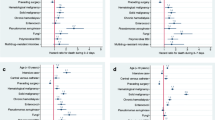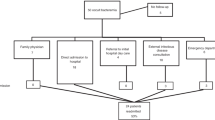Abstract
Objectives
We studied the profile of bloodstream infections (BSI) in the pediatric intensive care unit (PICU) and identified predictors of mortality.
Methods
The study collected data from hospital records for children younger than 18-years who developed BSI during their PICU stay between 2014 and 2019.
Results
In 114 patients, 136 PICU-acquired BSIs with 152 pathogens were documented. The incidence of BSI was 47.12/1000 PICU admissions and 7.95/1000 PICU hospital days. Gram-negative rods accounted for 75% of isolates, Gram-positive cocci accounted for 21.7% of isolates, and fungi accounted for 3.3% of isolated pathogens. ICU mortality was observed in 25 (21.9%) patients with a BSI compared to 94 (3.1%) patients without a BSI (P<0.001). Hemodynamic instability (P=0.014, OR 4.10, 95%CI 1.33–12.66), higher blood urea nitrogen (BUN) (P=0.044), and lower albumin levels (P=0.029) were associated with increased risk of ICU mortality.
Conclusion
BSI in the PICU is associated with increased mortality. Early identification and management of risk factors independently associated with poor clinical outcomes in these patients should be aimed to ensure improved survival.
Similar content being viewed by others
References
Elella R, Najm H, Balkhy H, et al. Impact of bloodstream infection on the outcome of children undergoing cardiac surgery. Pediatr Cardiol. 2010;31:483–9.
Jaballah N, Bouziri A, Mnif K, et al. Epidemiology of hospital-acquired bloodstream infections in a Tunisian pediatric intensive care unit: A 2-year prospective study. Am J Infect Control. 2007;35:613–8.
Grisaru-Soen G, Sweed Y, Lerner-Geva L, et al. Nosocomial bloodstream infections in a pediatric intensive care unit: 3-year survey. Med Sci Monit. 2007;13:CR251–7.
Singhi S, Ray P, Mathew JL, et al. Nosocomial bloodstream infection in a pediatric intensive care unit. Indian J Pediatr. 2008;75:25–30.
Lakshmi KS, Jayashree M, Singhi S, et al. Study of nosocomial primary bloodstream infections in a pediatric intensive care unit. J Trop Pediatr. 2007;53:87–92.
Garner JS, Jarvis WR, Emori TG, et al. CDC Definitions for Nosocomial Infections, 1988. Am J Infect Control. 1988;16:128–40.
Gray J, Gossain S, Morris K. Three-year survey of bacteremia and fungemia in a pediatric intensive care unit. Pediatr Infect Dis J. 2001;20:416–21.
Pillon M, Sperotto F, Zattarin E, et al. Predictors of mortality after admission to pediatric intensive care unit in oncohematologic patients without history of hematopoietic stem cell transplantation: A single-center experience. Pediatr Blood Cancer. 2019;66:e27892.
Zhang Y, Shi Q, Zhong G, et al. Biomarker-based score for predicting in-hospital mortality of children admitted to the intensive care unit. J Investig Med. 2021;69:1458–63.
Loke YK, Kwok CS, Niruban A, et al. Value of severity scales in predicting mortality from community-acquired pneumonia: systematic review and meta-analysis. Thorax. 2010;65:884–90.
Protti A, Singer M. Bench-to-bedside review: potential strategies to protect or reverse mitochondrial dysfunction in sepsis-induced organ failure. Crit Care. 2006;10:228.
Shorr AF, Zilberberg MD, Micek ST, et al. Predictors of hospital mortality among septic ICU patients with Acinetobacter spp. bacteremia: A cohort study. BMC Infect Dis. 2014;14:572.
Funding
None
Author information
Authors and Affiliations
Contributions
HDY,IK,KH: designed the study, analyzed the data and edited the manuscript; MA,RDS: gathered the data and reviewed the manuscript; JBA,AH, YSM,TA: helped in gathering the data and revising the manuscript. All authors approved the final version of manuscript, and are accountable for all aspects related to the study.
Corresponding author
Ethics declarations
Local Ethics Committee; No.0053-19-RMB, dated Jan 24, 2019.
Additional information
Competing interests
None stated.
Note
Additional material related to this study is available with the online version at www.indianpediatrics.net
Electronic Supplementary Material
Rights and permissions
About this article
Cite this article
Dabaja-Younis, H., Alaiyan, M., Shalabi, R.D. et al. Six-Year Surveillance of Acquired Bloodstream Infection in a Pediatric Intensive Care Unit in Israel. Indian Pediatr 60, 41–44 (2023). https://doi.org/10.1007/s13312-023-2693-8
Received:
Revised:
Accepted:
Published:
Issue Date:
DOI: https://doi.org/10.1007/s13312-023-2693-8




